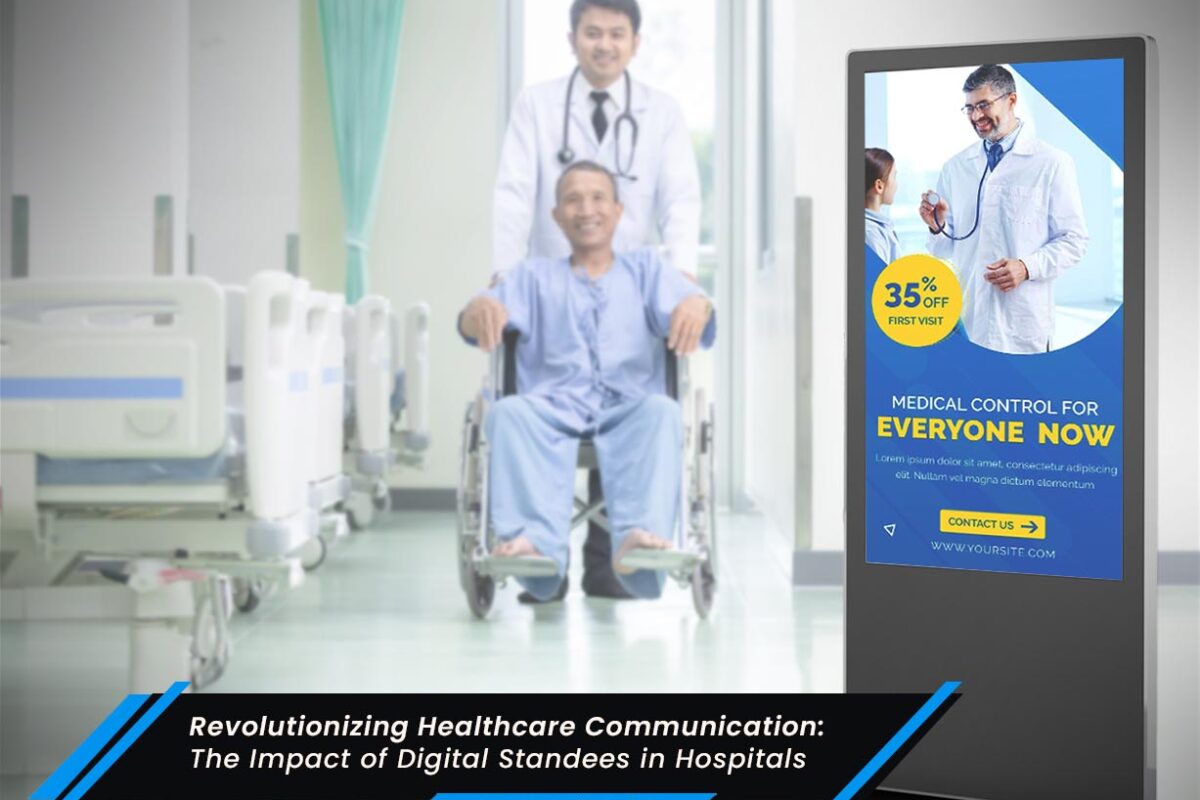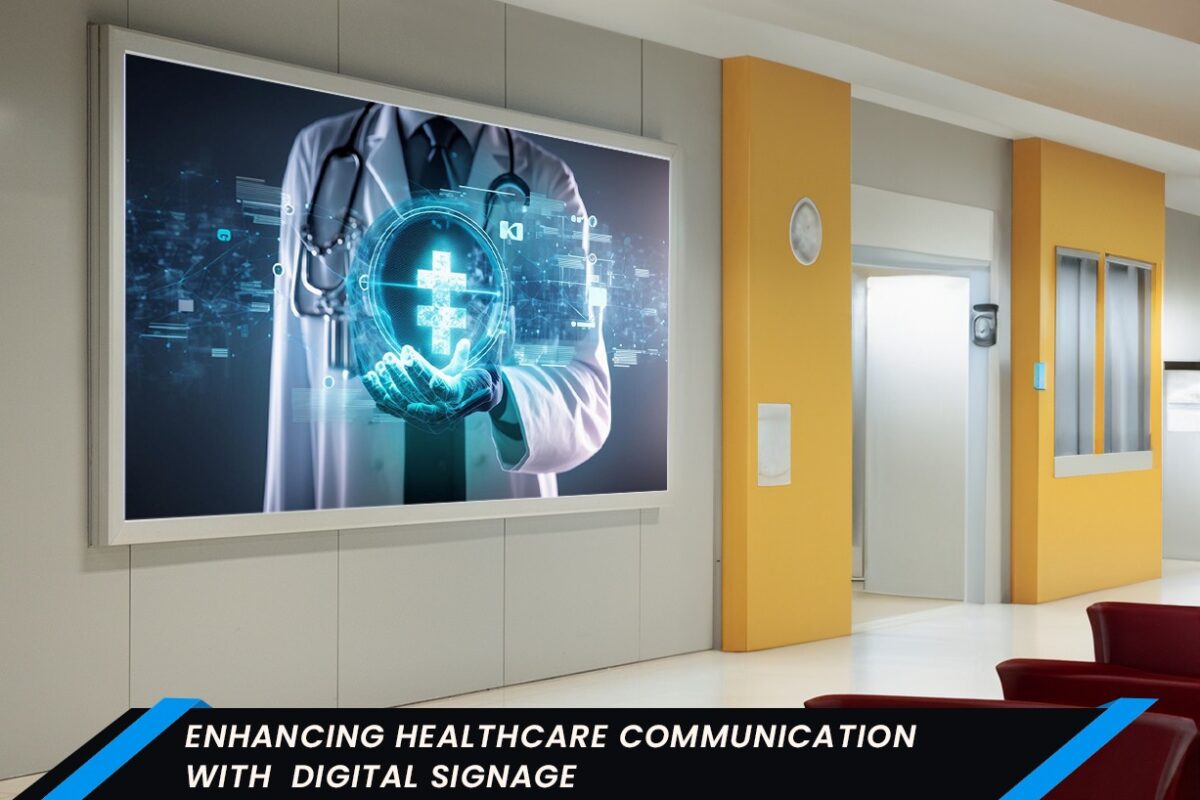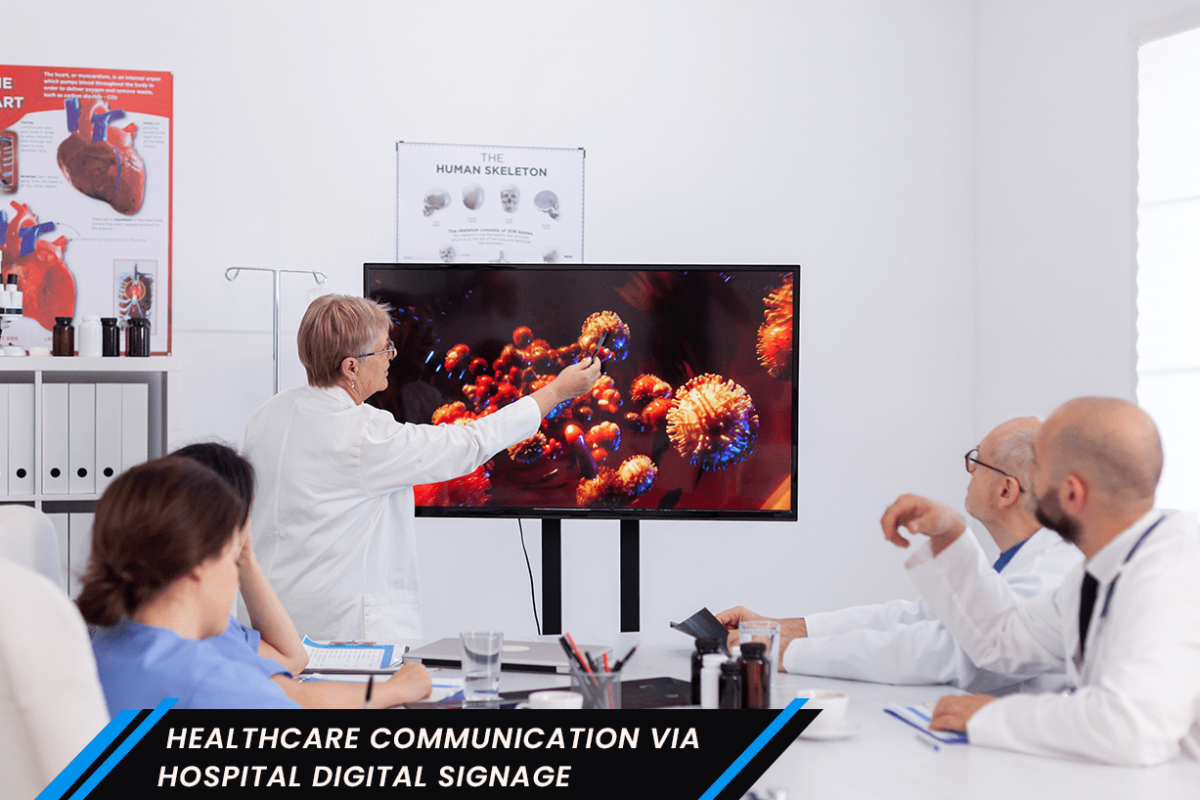In the ever-evolving landscape of healthcare, the integration of cutting-edge technology is transforming the way medical institutions communicate with patients, visitors, and staff. Among the innovative solutions making waves in this sector, Digital Standees stand out as powerful tools for disseminating information, enhancing patient experiences, and streamlining communication within healthcare facilities. This comprehensive exploration delves into the unique benefits and applications of Digital Standees in hospitals, shedding light on how these digital displays are reshaping the healthcare communication paradigm.
Understanding Digital Standees in Healthcare:
Introduction to Digital Standees:
Digital Standees in healthcare refer to interactive digital displays strategically placed within hospital premises. These standees incorporate high-definition screens, interactive features, and real-time content updates to provide dynamic and engaging information to patients, visitors, and staff.
Enhancing Communication Efforts:
The primary goal of Digital Standees in healthcare is to enhance communication efforts within the hospital ecosystem. These standees serve as dynamic information hubs, delivering timely updates, relevant announcements, and interactive content to various stakeholders.
Types of Digital Standees in Healthcare:
- Informational Standees: Provide essential information such as hospital services, department locations, and emergency protocols.
- Wayfinding Standees: Assist visitors in navigating the hospital by displaying interactive maps, directions to different departments, and current location indicators.
- Health Education Standees: Offer educational content on various health topics, preventive care, and wellness tips.
- Patient Engagement Standees: Facilitate patient engagement through interactive features, appointment reminders, and personalized health information.
Benefits of Digital Standees in Hospital Settings:
Real-Time Information Updates:
Digital Standees excel in delivering real-time information updates, ensuring that patients and visitors receive the latest announcements, news, and schedules. This feature is particularly crucial in healthcare settings where timely information can impact patient care and visitor experience.
Enhanced Wayfinding and Navigation:
Wayfinding Digital Standees play a pivotal role in helping patients and visitors navigate complex hospital layouts. Interactive maps and directional information guide individuals to their desired destinations, reducing confusion and enhancing overall satisfaction.
Patient Empowerment and Education:
Digital Standees contribute to patient empowerment by providing educational content on various health topics. Patients can access information about their conditions, treatment plans, and wellness tips, fostering a proactive approach to healthcare management.
Interactive Appointment Management:
Healthcare facilities can leverage Digital Standees for interactive appointment management. Patients can check and confirm appointments, receive notifications, and access relevant pre-appointment instructions, streamlining the scheduling process and reducing no-shows.
Emergency Communication:
During emergencies or critical situations, Digital Standees serve as vital communication tools. They can display emergency protocols, evacuation routes, and important announcements, ensuring that everyone within the hospital is well-informed and can respond appropriately.
Applications of Digital Standees in Hospitals:
Lobby and Reception Areas:
Placing Digital Standees in lobby and reception areas creates a welcoming and informative environment. Patients and visitors can access essential information about hospital services, check-in procedures, and current events, reducing wait times and improving the overall experience.
Clinical Waiting Areas:
Digital Standees in clinical waiting areas provide patients with up-to-date information on their appointments, wait times, and educational content related to their health conditions. This helps alleviate anxiety and keeps patients engaged while awaiting their appointments.
Emergency Rooms and Triage Areas:
In emergency rooms and triage areas, Digital Standees play a critical role in conveying urgent information, displaying wait times, and guiding patients through the emergency care process. Interactive features can be utilized to collect preliminary patient information for more efficient triage.
Patient Rooms and Bedside Displays:
Extending the use of Digital Standees into patient rooms allows for personalized content delivery. Patients can access their medical records, view treatment plans, and receive updates on their care. Bedside displays enhance patient engagement and satisfaction.
Staff Communication:
Digital Standees are valuable tools for internal communication among hospital staff. They can display important announcements, training materials, and updates on hospital policies. This ensures that staff members are well-informed and aligned with hospital protocols.
Overcoming Challenges and Ensuring Patient Privacy:
Privacy Concerns:
The implementation of Digital Standees in healthcare raises concerns about patient privacy. Hospitals must ensure that these digital displays adhere to strict privacy regulations, with secure data transmission and limited access to sensitive information.
Customization for Diverse Audiences:
Healthcare facilities serve diverse populations with varying needs and preferences. Customizing content on Digital Standees to cater to different languages, literacy levels, and cultural sensitivities is crucial for effective communication.
Accessibility Considerations:
Digital Standees should comply with accessibility standards to ensure that individuals with disabilities can fully engage with the content. This includes features such as text-to-speech capabilities, large fonts, and tactile interfaces for those with visual or auditory impairments.
Technological Advancements and Future Trends:
Integration with Electronic Health Records (EHR):
The integration of Digital Standees with Electronic Health Records (EHR) systems is a promising trend. This integration can provide patients with seamless access to their health information, enhancing transparency and continuity of care.
Artificial Intelligence (AI) for Personalized Interactions:
The use of artificial intelligence in Digital Standees can enable personalized interactions with patients. AI algorithms can analyze user behavior, preferences, and historical data to tailor content delivery for a more individualized experience.
Expanded Use of Augmented Reality (AR):
Augmented Reality (AR) features in Digital Standees can revolutionize patient education and engagement. Patients can use AR to visualize medical procedures, understand complex health concepts, and interact with three-dimensional models of the human body.
Interconnectivity with Wearable Devices:
Digital Standees may evolve to seamlessly connect with patients’ wearable devices, providing real-time health metrics and personalized recommendations. This interconnectivity can support patients in managing chronic conditions and maintaining overall wellness.
Conclusion:
Digital Standees are reshaping the healthcare landscape by revolutionizing communication within hospitals. From providing real-time information updates to enhancing patient education and wayfinding, these interactive displays are proving to be invaluable tools for healthcare institutions striving to create patient-centric and technologically advanced environments.
As technology continues to advance, the future of Digital Standees in healthcare holds exciting possibilities. The integration of artificial intelligence, augmented reality, and seamless connectivity with electronic health records is poised to elevate patient engagement, streamline processes, and contribute to the overall enhancement of healthcare services. The journey towards a digitally integrated healthcare experience has only just begun, promising a future where communication is not only informative but also empowering for patients and conducive to improved healthcare outcomes.



